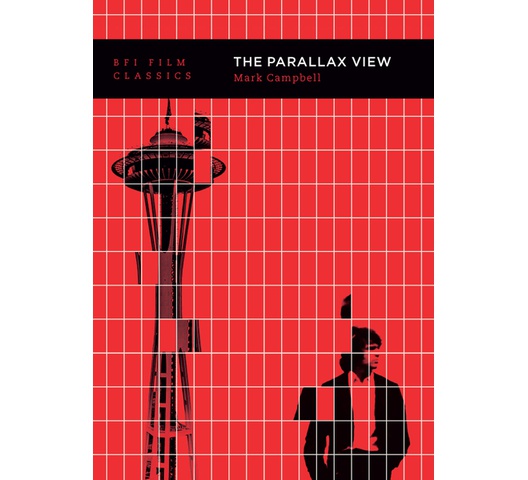
The Parallax View
This is an eBook that you can download electronically.
Alan J. Pakula's The Parallax View (1974) is a renowned example of the paranoid conspiracy thriller, a genre that was a marker of the 1970s. The period was haunted by the murders of John F Kennedy (1963), Malcolm X (1965), Martin Luther King (1968), and Robert Kennedy (1968), together with the crimes of the Manson family, Altamont, the Vietnam War, and the Watergate scandal.
Mark Campbell's study of the film situates it within this historical moment of increasing paranoia and conspiracy, analyzing the ways in which it not only reflected, but also actively constructed, this febrile worldview. He contextualizes the film as an adaptation of Loren Singer's 1970 pulp novel by the same name, and highlights the role of influential cinematographer, Gordon Willis, in constructing the visual style that was essential to the filmic representation of paranoia.
Focusing on the film itself, Campbell provides a detailed analysis of key scenes, particularly the central six-minute brainwashing sequence which featured imagery drawn from pop culture, advertising slogans, and violent imagery. He examines Pakula's use of the film-within-a-film visual trope, and how the scene refers to the then widely-held suspicion that television and mass media were tools of psychological “conditioning”, highlighting how this concern was reflective of new anxieties about corporate and media power.
SKU: 9781839026324
Format: PDF
Mark Campbell's study of the film situates it within this historical moment of increasing paranoia and conspiracy, analyzing the ways in which it not only reflected, but also actively constructed, this febrile worldview. He contextualizes the film as an adaptation of Loren Singer's 1970 pulp novel by the same name, and highlights the role of influential cinematographer, Gordon Willis, in constructing the visual style that was essential to the filmic representation of paranoia.
Focusing on the film itself, Campbell provides a detailed analysis of key scenes, particularly the central six-minute brainwashing sequence which featured imagery drawn from pop culture, advertising slogans, and violent imagery. He examines Pakula's use of the film-within-a-film visual trope, and how the scene refers to the then widely-held suspicion that television and mass media were tools of psychological “conditioning”, highlighting how this concern was reflective of new anxieties about corporate and media power.
KES 2,414

International delivery
Free click & collect
When you buy an ebook from TBC, you will be given a code to download your
purchase from our ebook partner Snapplify. After you have redeemed the code and
associated it with a Snapplify account, you'll need to download the Snapplify Reader
to read your ebooks. The free Snapplify Reader app works across iOS, Android,
Chrome OS, Windows and macOS; on tablets and mobile devices, as well as on
desktop PCs and Apple Macs.
You're currently browsing Text Book Centre's digital books site. To browse our range of physical books as well as a wide selection of stationery, art supplies, electronics and more, visit our main site at textbookcentre.com!
Reviews
This product does not have any reviews yet.
Add your review
